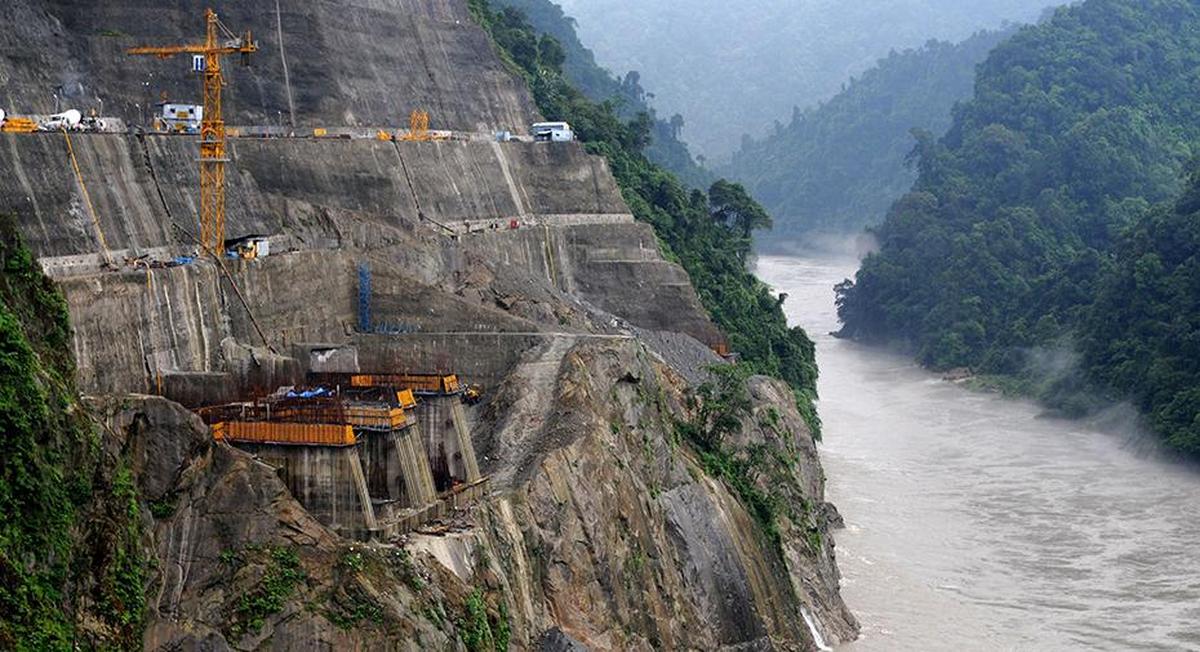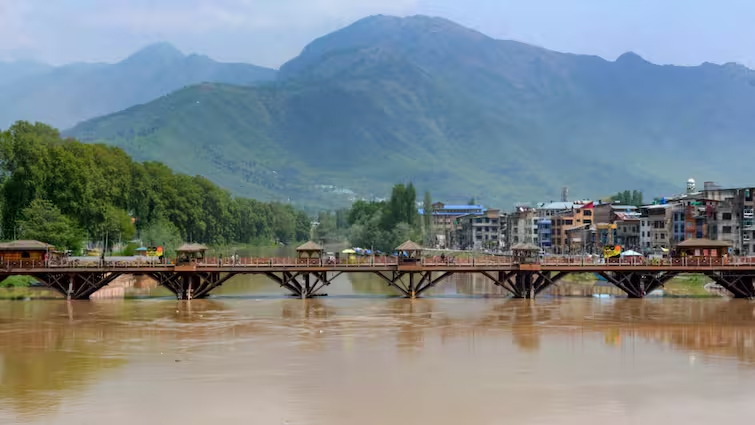Projected effects of climate change on marine ecosystems in Southeast Asian seas
Climate change is expected to impact the productivity of marine fisheries through changes in temperature, acidification, deoxygenation, the effects of sea level rise and other factors

The seas of Southeast Asia are home to some of the world’s most diverse ecosystems and resources that support the livelihoods of millions of people. Climate change will bring temperature changes, acidification and other environmental change, with uncertain consequences for human and natural systems, but there has been little regional-scale climate modelling of the marine ecosystem. We present initial dynamically downscaled projections using a biogeochemical model suitable for coastal and shelf seas.
A coupled physical-biogeochemical model with a resolution of 0.1° (approximately 11 km) was used to create projections of future environmental conditions under moderate (RCP4.5) and high (RCP8.5) greenhouse gas scenarios. Changes for different parts of the region are presented, including four sensitive coastal sites of key importance for biodiversity and sustainable development: UNESCO Biosphere Reserves at Cu Lao Cham-Hoi An in Vietnam, Palawan in the Philippines and Taka Bonerate-Kepulauan Selayar in Indonesia, and coastal waters of Sabah, Malaysia, which include several marine parks. The projections show a sea that is warming by 1.1 to 2.9°C through the 21st century, with dissolved oxygen decreasing by 5 to 13 mmol m-3 and changes in many other environmental variables.

The changes reach all parts of the water column and many places are projected to experience conditions well outside the range seen at the start of the century. The resulting damage to coral reefs and altered species distribution would have consequences for biodiversity, the livelihoods of small-scale fishers and the food security of coastal communities. Further work using a range of global models and regional models with different biogeochemical components is needed to provide confidence levels, and we suggest some ways forward. Projections of this type serve as a key tool for communities and policymakers as they plan how they will adapt to the challenge of climate change.
The world’s oceans are warming, acidifying and deoxygenating, leading to shifts in the geographical range of many marine species, and these changes are expected to accelerate this century (IPCC, 2019; IPCC, 2021). Southeast Asia is particularly vulnerable to the effects of marine climate change: large populations live in coastal areas (Neumann et al., 2015) and rely heavily on marine resources and marine ecosystem services (Barange et al., 2014).
In some Southeast Asian countries the ocean economy can account for 15 to 20% of total GDP (Ebarvia, 2016). In addition, the seas of this region host many sites of high ecological value such as the Coral Triangle linking the Philippines, Malaysia and Indonesia (Veron et al., 2011; Burke et al., 2012). The impact of climate change on the Southeast Asian marine environment is therefore of major social, economic and ecological concern, particularly its effects on fisheries and coral reefs.

Climate change is expected to impact the productivity of marine fisheries through changes in temperature, acidification, deoxygenation, the effects of sea level rise and other factors, and it is in the tropics that these changes are likely to first exceed natural variability (Lam et al., 2020). Small-scale fishers, who provide approximately half the fish for human consumption in Southeast Asia (Teh and Pauly, 2018), are particularly vulnerable to the effects of climate change (Barange et al., 2018). The aquaculture sector is similarly at risk, with potential economic and health consequences: cultivation of seaweed, caged fish and shellfish are important for the marine economy, food security, human nutrition, sustainable livelihoods and poverty alleviation in Southeast Asia (FAO, 2018; Monnier et al., 2020).
Climate change also poses a risk to coral reefs, which are areas of particularly high biodiversity: 76% of all coral species and 37% of coral reef fish species are found in the Coral Triangle (Burke et al., 2012). Rising temperatures and ocean acidification pose threats to coral reefs worldwide (Hoegh-Guldberg et al., 2007; Lough et al., 2018).
Increasingly frequent and more extreme heat-waves cause damage to reefs through mass coral bleaching reducing long-term sustainability (Hughes et al., 2018). In addition, ocean acidification is altering ocean carbonate chemistry, limiting coral growth and degrading the physical structure of reefs (Burke et al., 2012; Lam et al., 2020). Coral reef degradation in Southeast Asia threatens the associated food web, jeopardizing dependent biodiversity and fisheries, and impacting regional food security, coastal protection and tourism, potentially costing the region billions of dollars in lost revenue (Burke et al., 2002; Cesar et al., 2003; Burke et al., 2012).
Given the potential impact of climate change on key marine ecosystems in Southeast Asia and coastal communities that depend upon them, adequately projecting the effects of climate change on Southeast Asian seas is a crucial step towards informing strategies for poverty alleviation and food security, UN Sustainable Development Goals 1 and 2 (https://sdgs.un.org/goals). Global climate models provide a broad picture of the environmental change that may be experienced in the region (IPCC, 2019; IPCC, 2021), however they have a coarse resolution and the biogeochemical models used are typically designed for open ocean conditions: they do not include the range of plankton functional types and nutrient interactions needed to accurately model more complex coastal ecosystems (Stock et al., 2011; Drenkard et al., 2021).

We present regional, dynamically downscaled projections of change in the physical environment and lower trophic level ecosystem of Southeast Asian seas, to the end of the 21st century (Kay, 2021). This work was undertaken in the context of a research project focused on building capacity in marine planning and sustainable use of marine resources in Southeast Asia (GCRF Blue Communities, https://www.blue-communities.org/).
The project centered on four coastal sites which aim to support both coastal human populations and high biodiversity: UNESCO Biosphere Reserves at Cu Lao Cham-Hoi An in Vietnam, Palawan in the Philippines and Taka Bonerate-Kepulauan Selayar in Indonesia, and coastal waters of Sabah, Malaysia, which include several marine parks (Figure 1).
Sustainable development of sites like these, and the wider region, requires an understanding of how the marine environment and its resources are likely to alter under future climate change. Information from global models may be unreliable, given the coastal location of the sites, but regional projections for Southeast Asian seas have not previously been available. We were also interested in the changing marine food resource across Southeast Asia, which requires an understanding of change in primary productivity at the base of the food chain.
However global models give widely varying projections (see section 3.2.2) and regional models can give new insights; for example, studies of the Northwest European Shelf (Holt et al., 2016) have found that a regional model showed a different direction of change in net primary productivity for near-shore areas, compared to the global model it was based on. We therefore felt it was important to explore the potential for regional modelling of the area.
Our projections were created using a model with spatial resolution 0.1° (approximately 11 km) and a well-established biogeochemical/ecosystem model suited to coastal and shelf sea environments: the European Regional Seas Ecosystem Model (ERSEM; Blackford et al., 2004; Butenschön et al., 2016). This modelling system has previously been applied to coastal regions in many parts of the world, including Southeast Asia (Holt et al., 2009; Barange et al., 2014). The model was driven by outputs from a global climate model drawn from the Coupled Model Intercomparison Project Phase 5 (CMIP5; Taylor et al., 2011). We selected two Representative Concentration Pathways (RCPs) of greenhouse gases in the atmosphere (van Vuuren et al., 2011) to show a range of climate response: the moderate RCP4.5 scenario, under which atmospheric carbon dioxide concentration rises until mid-century and then stabilizes, and the more extreme RCP8.5 scenario, under which the concentration rises throughout the 21st century. The CMIP5 models are now being superseded by the more advanced CMIP6 set and the RCPs by Shared Socio-economic Pathways (SSPs), but it will be some time before regionally-downscaled versions of these models become available. In the meantime, this work offers a first look at what regional scale modelling offers for understanding climate change in Southeast Asian seas and makes recommendations for future downscaling efforts. The next section describes the modelling system and data used; section 3 presents the model outputs; section 4 discusses the implications of the projected change for people and ecosystems and the need for further modelling of this region.
Materials and methods
Model description
The projections were created using the Proudman Oceanographic Laboratory Coastal Ocean Modelling System (POLCOMS; Holt and James, 2001) coupled to the European Regional Seas Ecosystem Model (ERSEM; Butenschön et al., 2016). Together, these simulate the movement of water, energy and dissolved and suspended material through the sea and the cycling of nutrients and carbon through the marine ecosystem.
POLCOMS is a three-dimensional model of physical processes, suitable for modelling both deep and shallow water and areas with steep bathymetry. It is a free surface baroclinic model, with varying water depth, and includes the effects of tides but not waves. Forty depth levels were used at each point, regardless of total water depth, distributed more closely in the upper parts of the water column than at depth (a modified sigma system). The minimum water depth was 10 m. When run at the 0.1° resolution used here, POLCOMS is able to explicitly model processes of riverine freshwater inputs, tidal mixing and coastal upwelling that are parameterized in CMIP5 global models (Holt et al., 2009; Drenkard et al., 2021). These processes can influence circulation patterns and nutrient distributions in near-shore waters, with potential effects on water temperature and productivity which could affect resources such as corals, aquaculture sites and production at higher trophic levels. Given the widely varying water depths and very steep shelf edges within the region (Figure 1) it is important to use a model with adequate vertical resolution – large parts of the shelf area are less than 100 m deep.
ERSEM models the transfer of carbon, nitrogen, phosphorus and silicate through the lower trophic levels of the marine ecosystem (Butenschön et al., 2016). It is one of the more complex models of its type and is well suited to modelling coastal and shelf-sea environments. It has four phytoplankton functional types, three zooplankton types and bacteria, as well as six categories of dissolved and particulate organic matter. The carbonate system is included, enabling changes in pH to be modelled. The stoichiometry is fully flexible: transfers of carbon, nitrogen, phosphorus and silicate are tracked separately, with no fixed ratios, and the chlorophyll to carbon ratio varies depending on levels of light and nutrients. Kearney et al. (2021), reviewing the features of biogeochemical components in the next generation of global models, CMIP6, note that variable stoichiometry and inclusion of larger phytoplankton groups can improve the simulation of trophic transfers, while resolution of multiple detritus types enables fuller representation of nutrient circulation in complex, shallow-water environments. In this work, interactions at the seabed were represented by a simple remineralization scheme, where organic matter falling to the seabed is adsorbed and inorganic nutrients and carbon are returned to the water column at a rate proportional to their benthic concentration.




